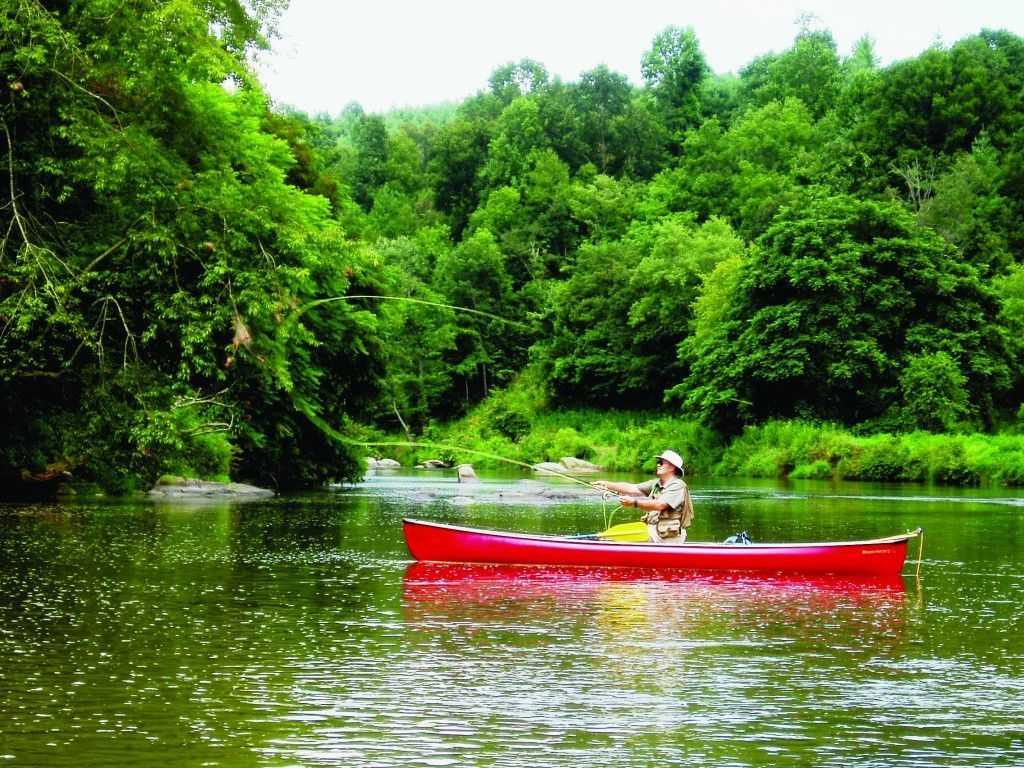Standing the Test of Time—The Classic Canoe
There are a lot of trendy, new ways to enjoy your time on the water. Knowing this, you still can’t beat a well-designed classic canoe for versatility and usefulness. Canoes have done it all throughout history, and they are still going strong despite the popularity of new watercraft. A canoe is still a great choice for fishing the local pond, enjoying a float on the river and exploring wilderness. Nothing is more versatile.
With the development of a variety of “plastics” and their adaptation to canoes in the late 60s, the durability of canoes made them a great choice for rocky whitewater rivers and wilderness adventures. The application of the laminate material Royalex made canoes nearly indestructible, but still lightweight. Today, companies are working hard to find even newer materials with the same, or better, ruggedness and light weight.
A 15- to 17-foot canoe is the most useful and popular choice. It can be handled efficiently solo, with the paddler on a center seat. It can be paddled tandem by two folks and still accommodate one or two kids or the family pet. It can be paddled with the standard single-blade paddle, and it can be paddled with a double-bladed kayak paddle. There will still be room for a small cooler and some fishing tackle. For overnight camping, you can’t beat the hauling capacity of a canoe. Two paddlers in a 17-foot canoe can easily handle a couple hundred pounds of gear.
For most folks, canoes are easy to get in and out of. Also appealing are a variety of paddling positions: seated, kneeling, legs stretched out in front, legs tucked under the seat, kneeling on one knee, etc. Yes, you can even stand in many popular designs of canoes and paddle, pole or fish with the same stability, or more, than is advertised on some of the new, trendy designs of watercraft.
Canoes also offer a high level of security for gear and tackle. A variety of gear sits easily inside a canoe and can be tied in for extra security. You don’t have to worry about equipment sliding or rolling off the deck and sinking into the depths, or trying to fit it in small compartments.
A well-designed and manufactured canoe can also be quite easy to transport. In many cases, a two-person canoe may actually weigh a few pounds lighter than a one-person kayak. That often surprises shoppers who are lead to believe that kayaks are light…often just the opposite is true. And, when in the canoe, tackle and gear is a lot easier to access than when seated in a kayak.
Shopping for watercraft this spring? Consider your primary uses and explore all your options, especially for transporting your new boat. Also solicit the opinions from experienced, veteran paddlers, and don’t be too quickly influenced by attractive advertising and sales people. A well thought out initial purchase can provide many years of safe and enjoyable paddling.
Richard Griggs operates Carolina Mountain Sports in downtown Statesville, N.C. He’s paddled canoes in saltwater and freshwater from New England to Missouri and done wilderness canoe trips in Canada and Maine.
